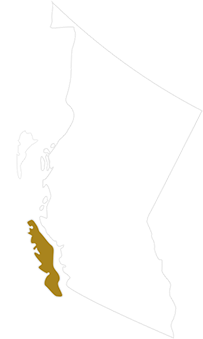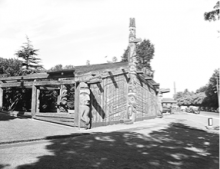JOURNEY
Origin
Situated on southeast shore of Barkley Sound, Kiixin is the ancient capital of the Huu-ay-aht Nations, where these figures were erected around 1860 to welcome visitors to a potlatch.
The figures are Nutchkoa and Ho-miniki, the first ancestors, who came down from the heavens at a time when the Huu-ay-aht were half human and half bird. Nutchkoa’s arms stretch out to welcome the Huu-ay-aht into their territory and invite them to a great potlatch. He is joined here by Ho-miniki, the first woman, who long ago married a Huu-ay-aht ancestor named Shewish.
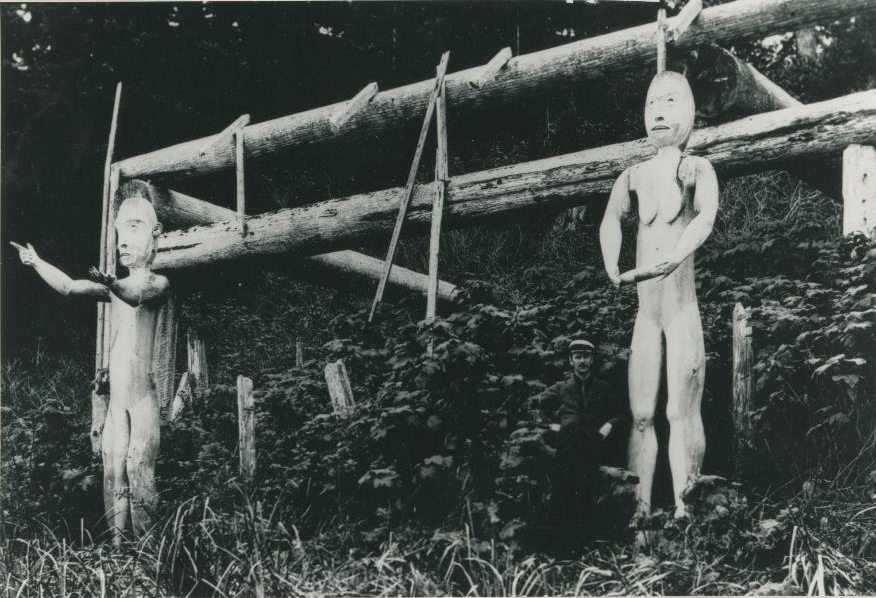
Only the frame of the house remained when this photograph was taken at Kiix̣in before the figures were removed in 1911. C. Bradbury photograph, Newcombe collection, PN 4659.
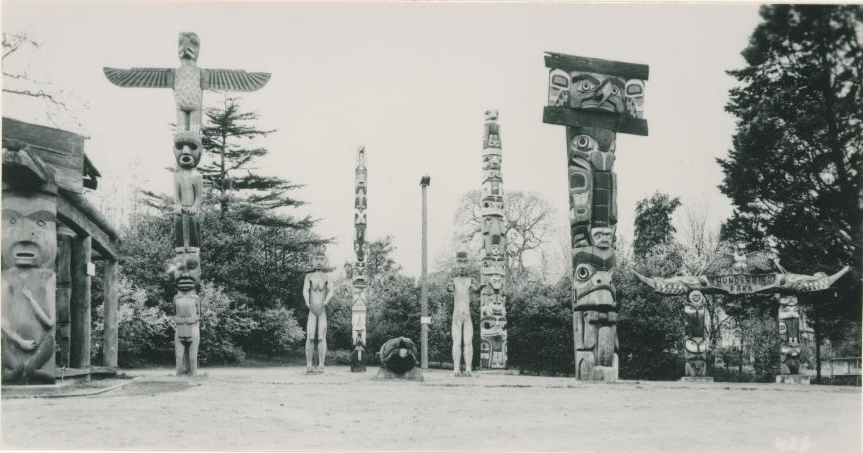
The first placement of the welcome figures in Thunderbird Park is shown in this undated postcard. PN 17603.
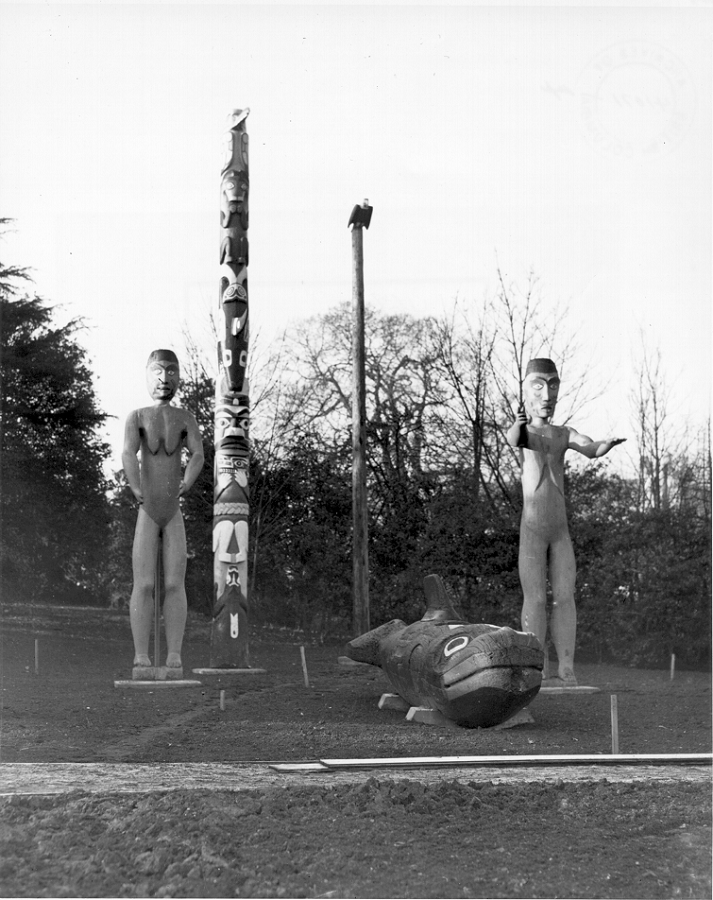
The welcome figures flank a Haida carving of a whale from T’annu Llnagaay in this undated photograph of Thunderbird Park. B-07297.
These ancestors illustrate the Huu-ay-aht principle of Hišuk ma c̕awak (“all is one”), and the essential natural balance of the world. For Huu-ay-aht, the connections between people, nature and the spiritual world are clearly evident and very strong. The sky, sea, forest, mountains and earth are said to be inhabited by supernatural creatures such as the Thunderbird, Giant Sharks, and the ya’i spirits of the mountains. Tribal and family histories recount numerous adventures of our ancestors’ encounters with such creatures, where they received spirit powers and treasures - that have since been passed down through many generations.
Huu-ay-aht Nations society is organized around the concepts of the Ḥaw̓iiḥ (hereditary chiefs) and the hahoulthee (traditional chiefly territories) and guided by the philosophy of hišuk ma c̕awak (everything is one), and the carved figures embody these values. They are connected to important events in Huu-ay-aht history: the arrival of the first Huu-ay-aht people at the beginning of time, a 19th century potlatch, a 21st century agreement.
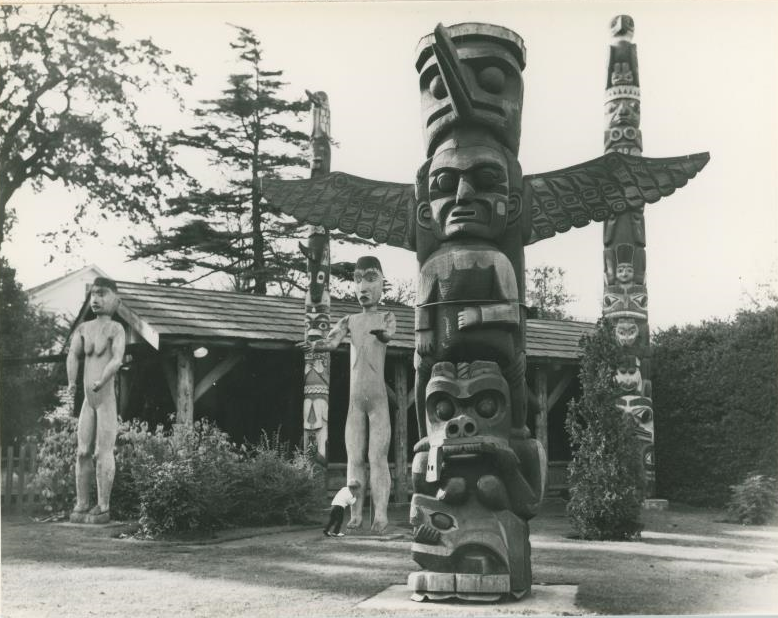
The welcome figures in their second location in Thunderbird Park, standing in front of the carving shed and among poles by William Clallam (Coast Salish), Mungo Martin and Henry Hunt (Kwakwaka’wakw) and Robert Ridley (Haida). E. W. A. Crocker (Trio) photograph, early 1950s. PN 13945.
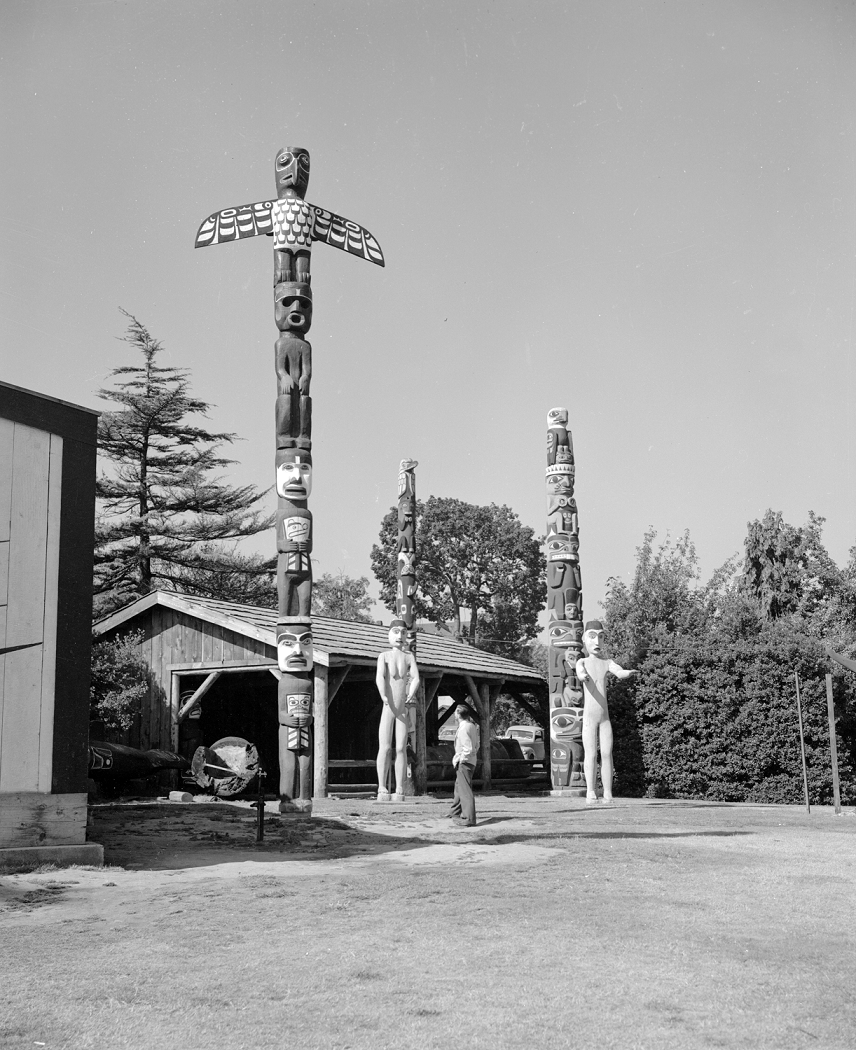
The welcome figures in Thunderbird Park, 1955. The buildings are Wawadit'ła (the Mungo Martin House) on the left with the Carving Shed behind. The tall pole is by Mungo Martin, David Martin and Mildred Hunt. The figure in the photograph is curator Wilson Duff. BC Government photograph. I-20998.
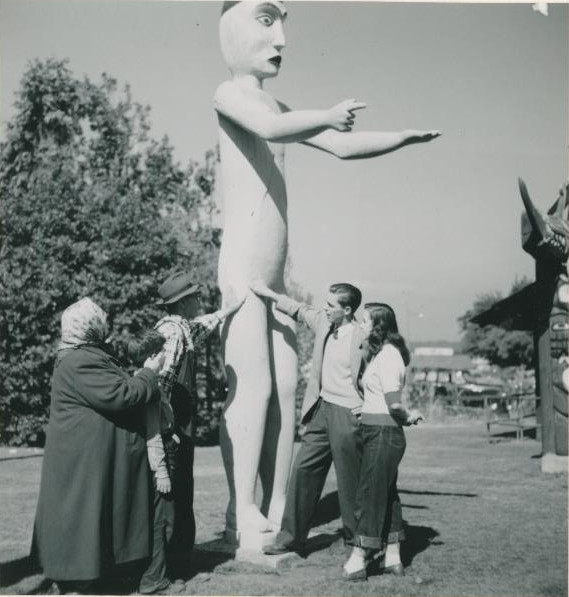
Abaya (Mrs. Mungo Martin), Tony Hunt, Mungo Martin, museum curator Wilson Duff, and Mildred Hunt with the figure of Nutchkoa in Thunderbird Park, 1952. Royal Lowy photograph. PN 18465.
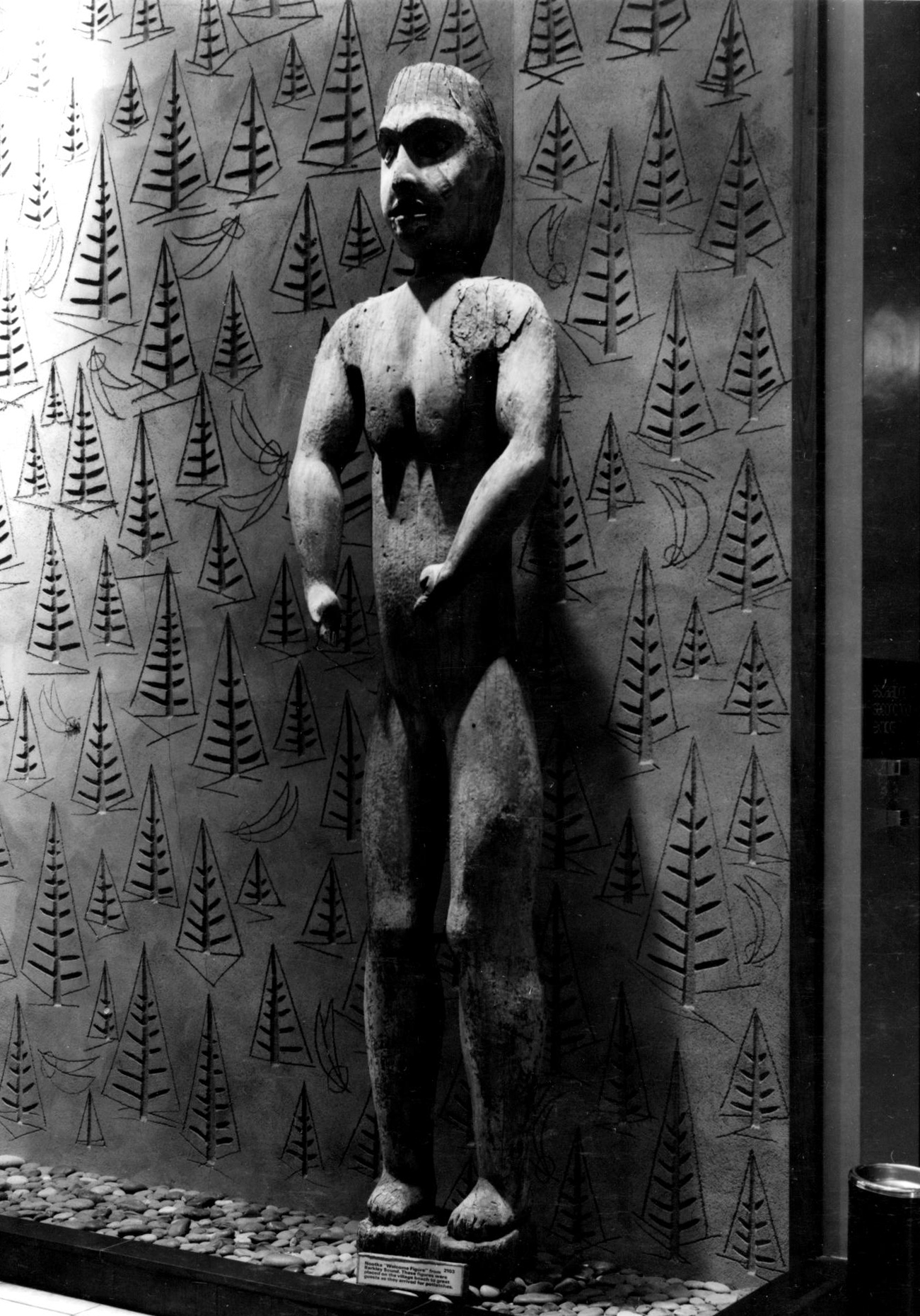
Figure of Ho-miniki in the museum’s original lobby, 1974. Ray Bethell photograph. CPN 2102.
JOURNEY
Removal
By the time these figures were erected, diseases brought by colonizers had greatly reduced the population at Kiix̣in. The last survivors moved away in the 1880s.
In 1911 Charles F. Newcombe, a medical doctor and artifact collector based in Victoria, purchased the carved figures for the museum through his agent, James B. McKay. The facial decorations, depicting small marine animals and a drying frame for clams, were painted later by George Jake (Chakes George) of Port Alberni.
MacKay told Newcombe that the Huu-ay-aht would sell the poles for $10 each and shipping would come to $7. Following their acquisition by the museum, the welcome figures were moved to several locations and continued to be associated with important events. In 1936 they were erected outside Spencer’s department store in Vancouver for the city’s Golden Jubilee Celebration.
These figures were among the monumental carvings displayed in Thunderbird Park when it was established in 1941. When the museum’s new lobby was built in 1996, they were installed there and formally rededicated by a Huu-ay-aht delegation that included the Tayii Ḥaw̓iiḥ (first ranked hereditary chief) at that time, Spencer Peters.
JOURNEY
Today
The Huu-ay-aht are one of five Nuu-chah-nulth Nations who ratified the Maa-nulth Final Agreement, a treaty with the Province of British Columbia and the Government of Canada. An appendix to the agreement lists the cultural treasures that the Royal BC Museum will transfer to the Huu-ay-aht First Nations and those that will remain at the Royal BC Museum. The welcome figures from Kiix̣in are among those that the museum will retain. At the main entrance to the museum, they continue to serve their original purpose of welcoming guests.
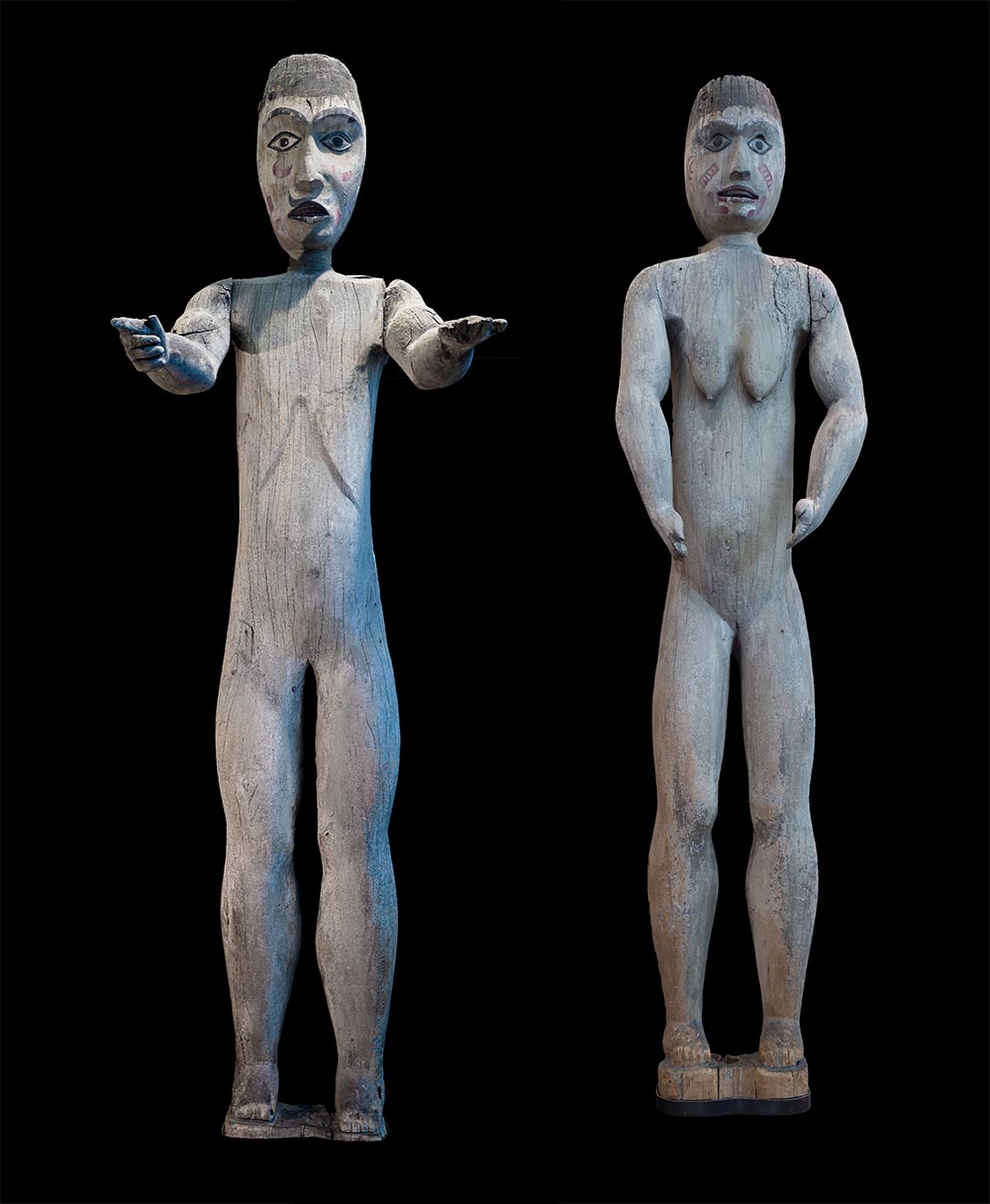
The figures from Kiix̣in now welcome visitors to the Royal BC Museum.
In 2000, new versions of the figures were carved and installed at the entrance to the House of Huu-ay-aht at Anacla, Pachena Bay, where they welcome guests into Huu-ay-aht territory. And when the Huu-ay-aht welcomed home objects repatriated from the Royal BC Museum under the terms of the Maa-nulth Final Agreement in 2016, small versions of the welcome figures stood on the table as the legal transfer papers were signed by the Tayii Ḥaw̓iih (hereditary chief), Derek Peters.
Still at Kiix̣in are the remains of eight houses, an ancient fortress site and several archaeological sites. Kiix̣in was officially designated as a National Historic Site by the Historic Sites and Monuments Board of Canada in 1999.
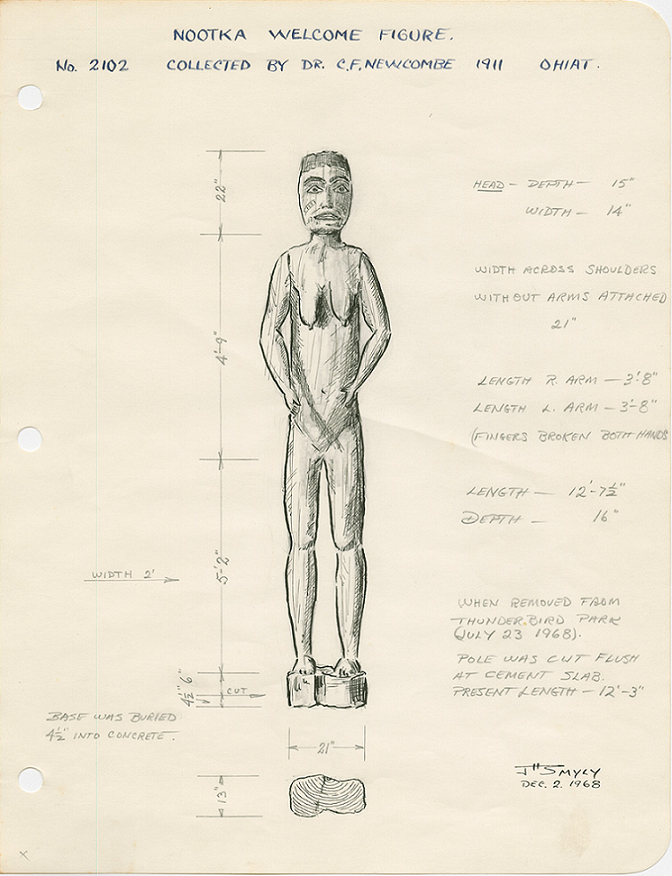
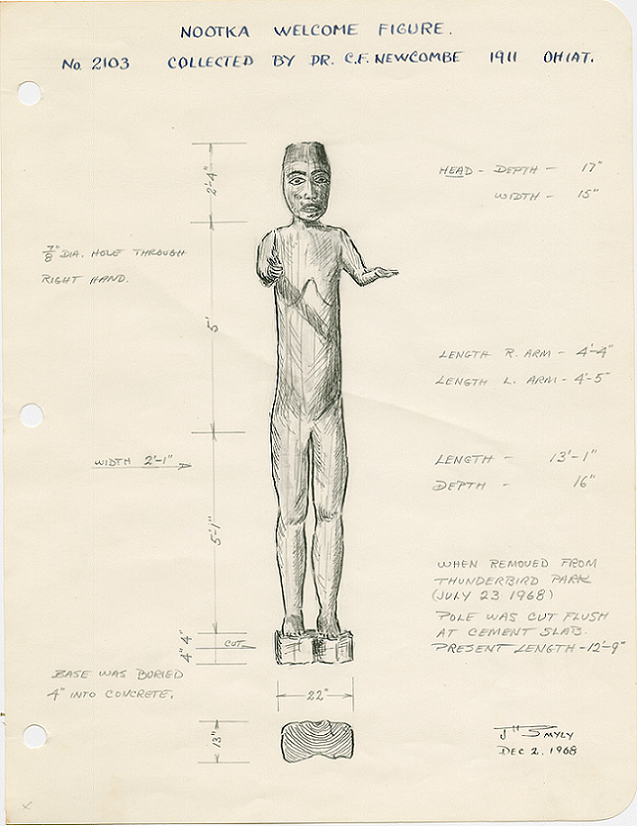
John Smyly, a museum technician, made detailed drawings and documented the work done by the museum to restore and stabilize the figures.
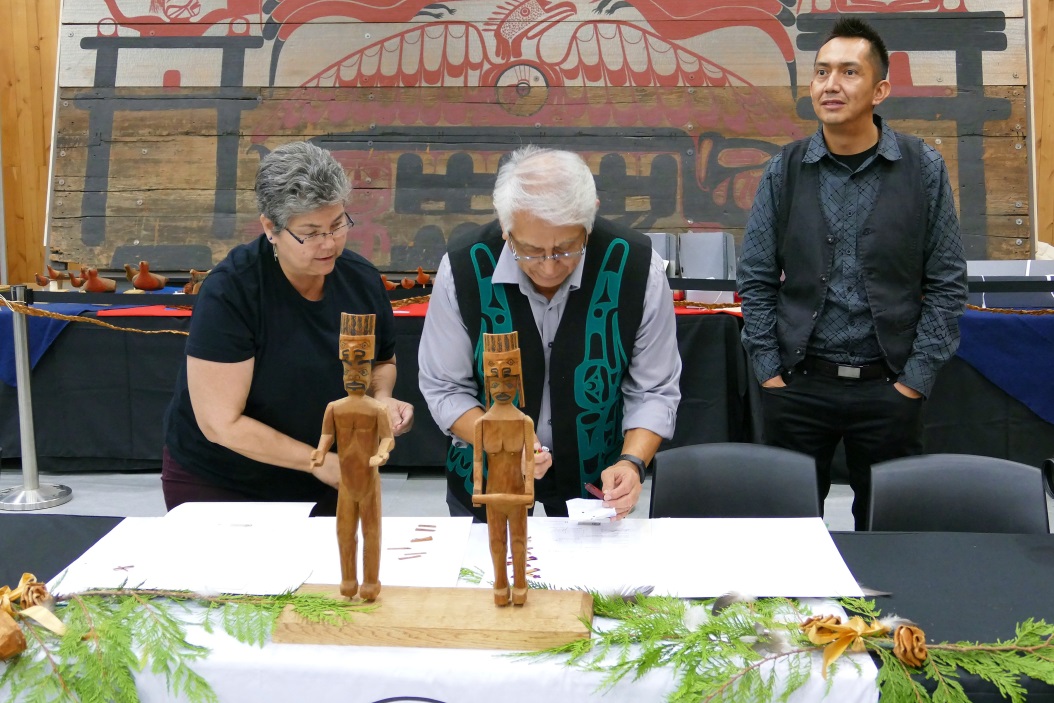
Small versions of the welcome figures grace the table where the legal transfer papers were signed at Port Alberni in 2016. The repatriated ceremonial screen is in the background. Cezary Kolsut photograph.
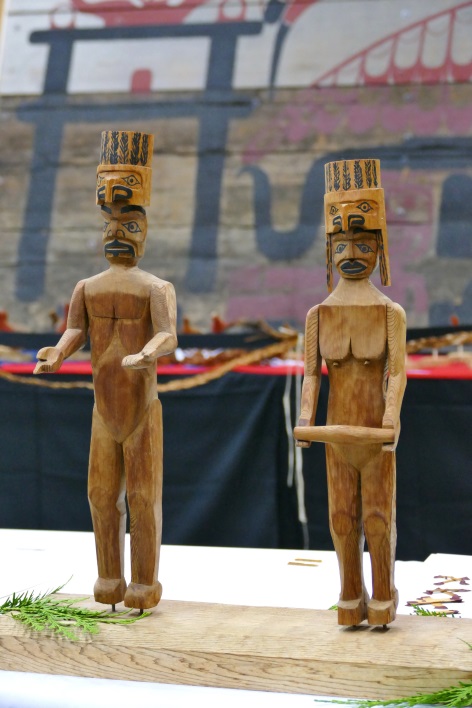
Miniature welcome figures at the transfer of cultural treasures from the Royal BC Museum to the Huu-ay-aht First Nations, Port Alberni, 2016. The original figure of Ho-miniki probably held a ceremonial object called a topati, as shown here. Cezary Kolsut photograph.
CONNECTIONS
Related Carvings
Kura Rorick
Kura Rorick
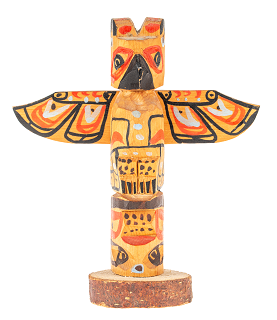
Hello, I am Kura Rorick. I am 11 years old. I’m Hesquiaht (Nuu-chah-nulth) and Haida, and I love to research about my culture. I mostly enjoy things like totem poles, masks, woven hats, etc. but really I like to see any type of First Nations art! Another thing I enjoy is learning my mom’s Nuu-chah-nulth language. I’ve been to hundreds of her classes and language nests. I have even been to Juneau, Alaska, to see the Sealaska heritage celebration in 2018. I have always been involved with my culture and I will always look forward to learning more !
Explore a curated selection of Royal BC Museum objects and contemporary photographs that inspire this community member to continue working in the tradition.
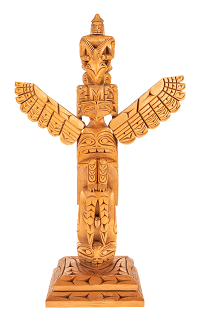
Thunderbird and people are great hunters.

Bear is under the eagle, while human is at the top of this pole.
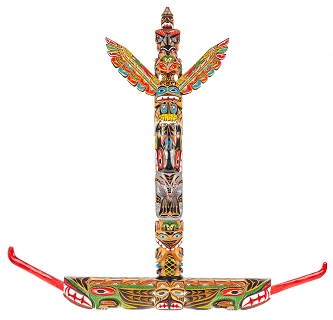
This pole has many colors like the rainbow.
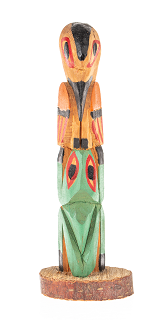
This frog and bird are tiny.
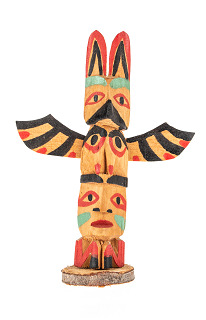
Thunderbird is flapping his wings.

This thunderbird is very small.

If you want a pole be smooth, use a sharp carving knife.

This is a paint brush.

This is a paint brush.
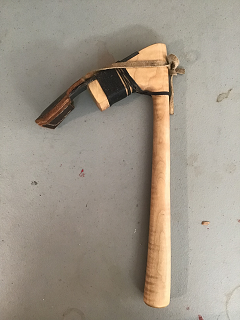
My dad always uses adzes.
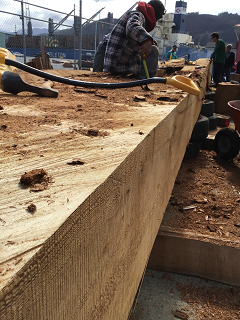
They are carving
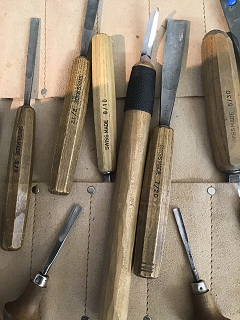
These are chisels and a carving knife.
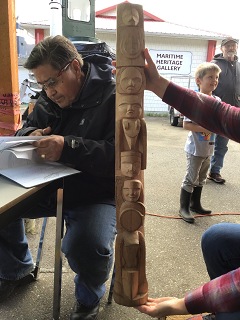
I am looking at the small pole and forming an opinion.
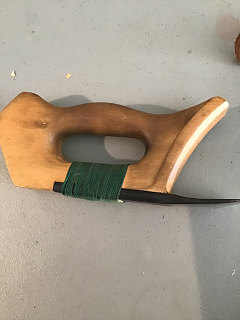
My grandfather made this D-adze.

